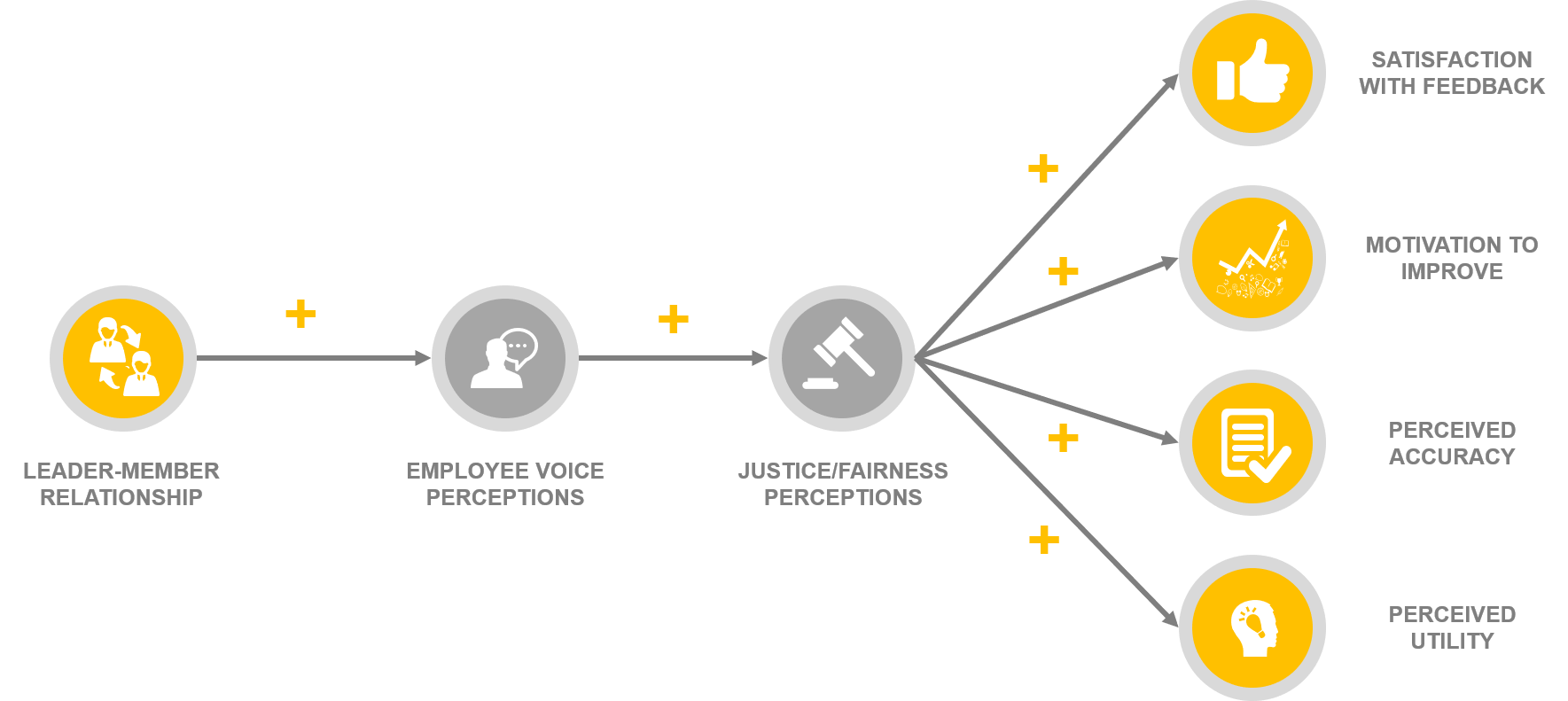Digest 4. How leaders can drive successful feedback
New trends in organizations advocate for a shift from formal performance appraisal sessions to a more informal approach focused on feedback. However, through a comprehensive analysis of previous evidence, Kluger and DeNisi’s (1996) suggested that feedback leads to higher performance only in a third of the times, and sometimes it even decreases it. These negative outcomes have initiated a rising search for explanations, especially in relation to the differing employee reactions to feedback. The intriguing question is why employees receiving the same feedback show different reactions?
Relationship quality as the key to successful feedback
Some researchers argued that feedback sessions occur in a social context and as such, the preexisting supervisor-subordinate relationship plays a large role.
An example of a study that explored how the quality of the leader-employee relationship could impact employees’ reactions to feedback is the one by Elicker, Levy, and Hall (2006). Using 2 questionnaires, one administrated before the feedback session and one after, they surveyed 188 employees from a large petrochemical company in the US, uncovering noteworthy results. The researchers explored the following 4 reactions to feedback:
Satisfaction with the feedback received;
Motivation to improve one’s work behavior after feedback;
Perceived accuracy of the feedback;
Perceived utility of the feedback to learn.
The results revealed a strong effect of the quality of the supervisor-subordinate relationship on the 4 reactions described above. In other words, employees who have poor relationships with their leaders appear to respond less favorably to feedback on performance.
But what exactly is a high-quality relationship between a leader and a member?
An influential review by Schriesheim et al. (1999) proposed that this relationship (commonly called Leader-Member Exchange or LMX theory) should be treated as a multi-dimensional concept, that includes:
Affect: the emotional side of the relationship. Both the leader and the employee like and experience positive feelings about each other;
Loyalty: the mutual trust and level of confidence in the other’s personal character.
Contribution: the perceived amount, direction, and quality of support given to achieve task-related goals;
Professional Respect: the perception of reputation of each other at work.
The role of employee voice
The study also unveiled why this relationship impacts feedback reactions. First, employee-supervisor relationships can influence what is called “employee voice”. Voice essentially refers to the opportunity to present one’s point of view, especially to allow an individual who is affected by a decision to present information he or she feels is relevant. In turn, this leads to a higher degree of justice/fairness perceptions; hence, the employee feels respected and treated with dignity. In a previous digest, we have discussed the factors underlying higher fairness and a better acceptance of negative feedback.
So, developing high-quality relationships makes it likely that employees will take feedback on board, because they feel heard and have higher trust in the positive intentions of the supervisor. The ongoing communication that occurs in a high-quality relationship also should decrease the degree of surprise from the employee when receiving performance information in a feedback session.
Organizational implications
To start with, it would be beneficial to train supervisors to give all employees voice opportunities, regardless of their relationship quality.
Managers can receive simple instructions to ask team members for their thoughts, to provoke objections, to engage in active listening (asking clarifying questions, taking notes, and rephrasing members’ statements), and to acknowledge individual inputs when communicating decisions. This will help to minimize employee resistance and the potential negative impact that feedback may have on performance;
As good quality relationships are important also among colleagues, for feedback exchanges, it may also be a good idea to put an effort in organizing social events and in team building initiatives where teams can bond informally and develop psychological safety. These results suggest that it can be beneficial to have an organizational culture where friendship is supported and trusting relationships are the norm.
——
Reference: Elicker, J. D., Levy, P. E., & Hall, R. J. (2006). The role of leader-member exchange in the performance appraisal process. Journal of Management, 32(4), 531–551. https://doi.org/10.1177/0149206306286622

